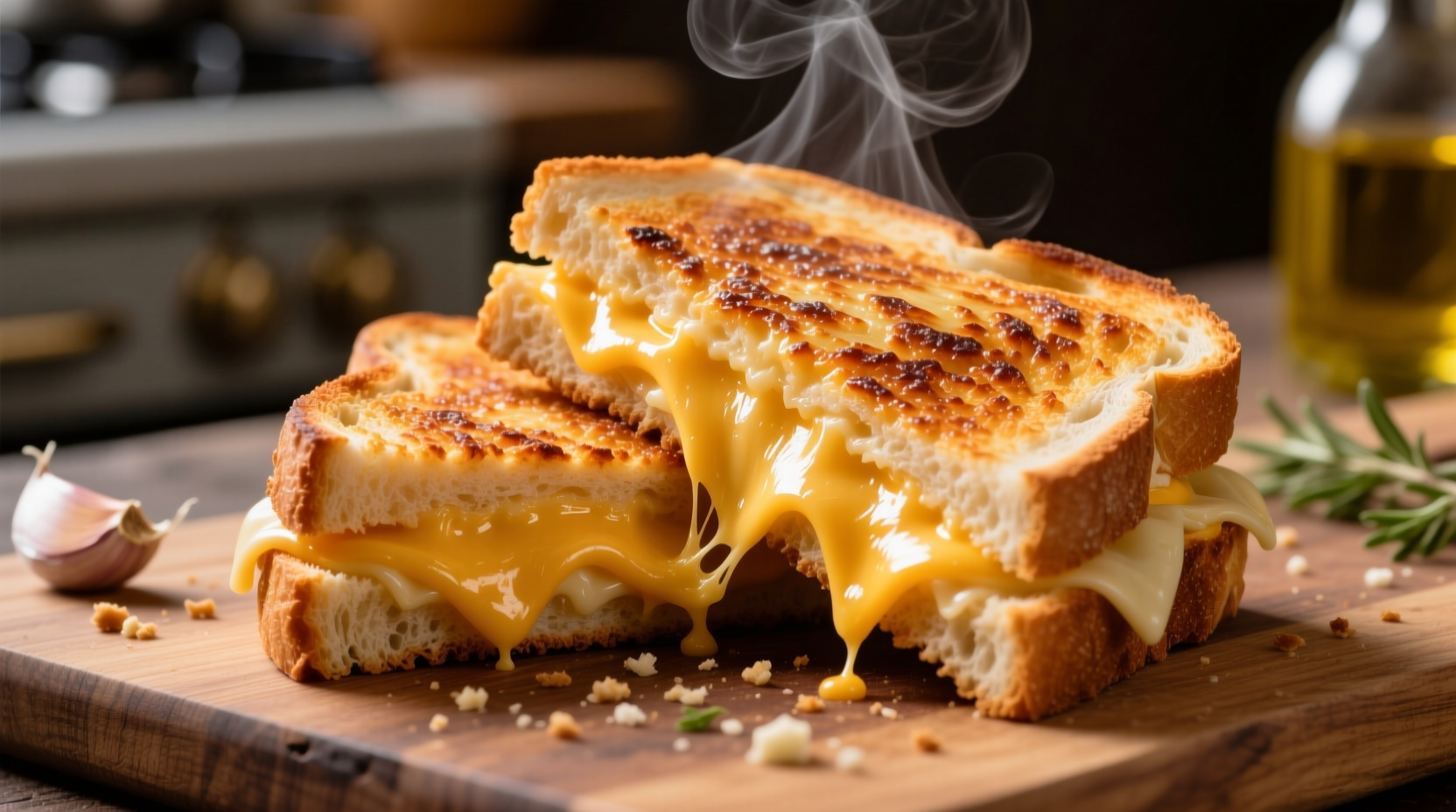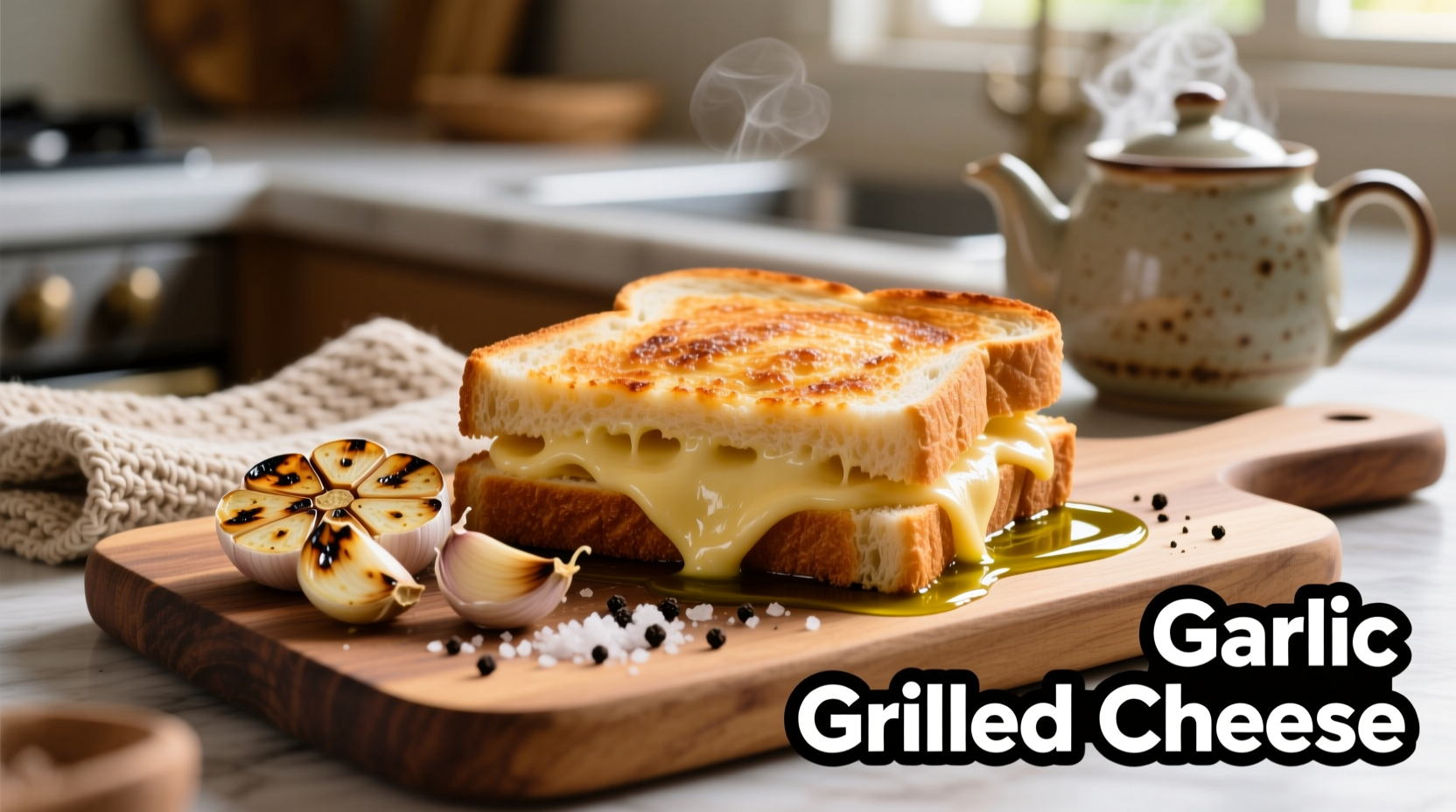Garlic grilled cheese combines two beloved comfort foods into one irresistible sandwich. The best version features crispy, buttery bread, perfectly melted cheese with that signature stretch, and garlic that's aromatic without being overpowering. This guide delivers the precise methods professional chefs use to create balanced flavor and ideal texture every time.
The Science Behind Perfect Garlic Grilled Cheese
Understanding the chemistry of your ingredients transforms good grilled cheese into extraordinary. When garlic meets heat, its sulfur compounds transform from sharp and pungent to sweet and nutty. The key is gentle infusion - too much heat too quickly creates bitterness. Professional kitchens typically use a two-stage garlic preparation: first softening minced garlic in butter over low heat, then incorporating it into the spread.
According to food science research from the USDA Agricultural Research Service, cheese melting behavior depends on moisture content and pH levels. Cheeses with higher moisture (like Monterey Jack at 41% moisture) melt more smoothly than drier varieties. The ideal cheese blend combines one excellent melter (Monterey Jack) with one flavor enhancer (sharp cheddar) and one creamy component (Gruyère).
Bread Selection Guide: Finding Your Perfect Base
Your bread choice dramatically impacts texture and flavor absorption. The following comparison shows optimal options:
| Bread Type | Texture Result | Garlic Absorption | Best For |
|---|---|---|---|
| Sourdough | Crisp exterior, chewy interior | Moderate | Classic preparation |
| Brioche | Rich, golden crust | High | Luxury version |
| Country White | Even browning | High | Beginner-friendly |
| Rye | Firm crust | Low | Flavor contrast |
Garlic Preparation Methods Compared
How you prepare your garlic makes all the difference between harsh bitterness and sweet aroma:
- Raw garlic - Too sharp for direct application; use only in small amounts mixed with butter
- Minced garlic in butter - Cook over low heat for 2-3 minutes until fragrant but not browned
- Garlic-infused oil - Steep crushed cloves in warm oil for 15 minutes, then strain
- Roasted garlic - Creates sweet, mellow flavor; squeeze softened cloves onto bread

Step-by-Step Perfect Garlic Grilled Cheese
Ingredient Selection
For the ideal garlic grilled cheese sandwich, you'll need:
- 2 slices quality bread (sourdough recommended)
- 3 tablespoons unsalted butter, softened
- 1 teaspoon minced garlic (about 1 clove)
- 3 ounces cheese blend (1.5 oz Monterey Jack, 1 oz sharp cheddar, 0.5 oz Gruyère)
- Pinch of smoked paprika (optional)
Assembly Technique
Professional chefs use a specific assembly method that prevents common issues:
- Mix softened butter with minced garlic and let sit for 10 minutes to infuse
- Grate cheeses and mix thoroughly for even melting
- Spread garlic butter on both outer sides of bread
- Place cheese between dry inner surfaces of bread
- Press gently to adhere cheese to bread
Cooking Process
The temperature control makes or breaks your garlic grilled cheese:
- Preheat cast iron skillet to 275°F (medium-low heat)
- Place sandwich in cold skillet, then turn heat to medium-low
- Cook covered for 3 minutes to melt cheese evenly
- Uncover and cook 2-3 minutes until golden brown
- Flip and repeat on second side
- Rest 1 minute before cutting for optimal cheese pull
Three Gourmet Variations Worth Trying
Truffle Garlic Grilled Cheese
Add 1/4 teaspoon white truffle oil to your garlic butter mixture. Pair with fontina cheese for an earthy, aromatic experience that elevates your basic garlic grilled cheese sandwich.
Herb-Infused Version
Mix 1 teaspoon each of finely chopped fresh thyme and rosemary with your garlic butter. The herbal notes complement the garlic beautifully, creating a more complex flavor profile that works well with aged cheddar.
Caramelized Onion Garlic Grilled Cheese
Spread a thin layer of caramelized onions between the cheese layers. The sweetness balances the garlic's sharpness, creating restaurant-quality depth that transforms your easy garlic grilled cheese into something extraordinary.
Troubleshooting Common Problems
Soggy Sandwich Fix
If your bread becomes soggy, you've used too much butter or the heat was too high. Use the cold skillet method described above and measure butter precisely. For perfect results, professional kitchens use a 3:1 bread-to-butter ratio by weight.
Preventing Cheese Leakage
Cheese leakage happens when the sandwich is overfilled or the heat is too intense. Keep cheese portions to 1.5 ounces per slice of bread and maintain consistent medium-low heat. Pressing the sandwich gently during the first minute of cooking helps seal the edges.
Rescuing Burnt Sandwiches
If your garlic grilled cheese starts burning, immediately transfer to a clean plate and cover with another plate to finish melting the cheese with residual heat. Next time, reduce your heat by one level and use a thermometer to maintain 275-300°F.
Why This Method Works Every Time
The cold skillet technique, precise cheese ratios, and controlled garlic infusion address the three most common failures in homemade grilled cheese: uneven melting, burnt bread, and harsh garlic flavor. Food historians note that grilled cheese evolved from medieval European open-faced sandwiches, but the modern version gained popularity in America during the Great Depression when cheese became affordable. Today's gourmet variations build on this humble foundation with professional techniques that maximize flavor development.











 浙公网安备
33010002000092号
浙公网安备
33010002000092号 浙B2-20120091-4
浙B2-20120091-4